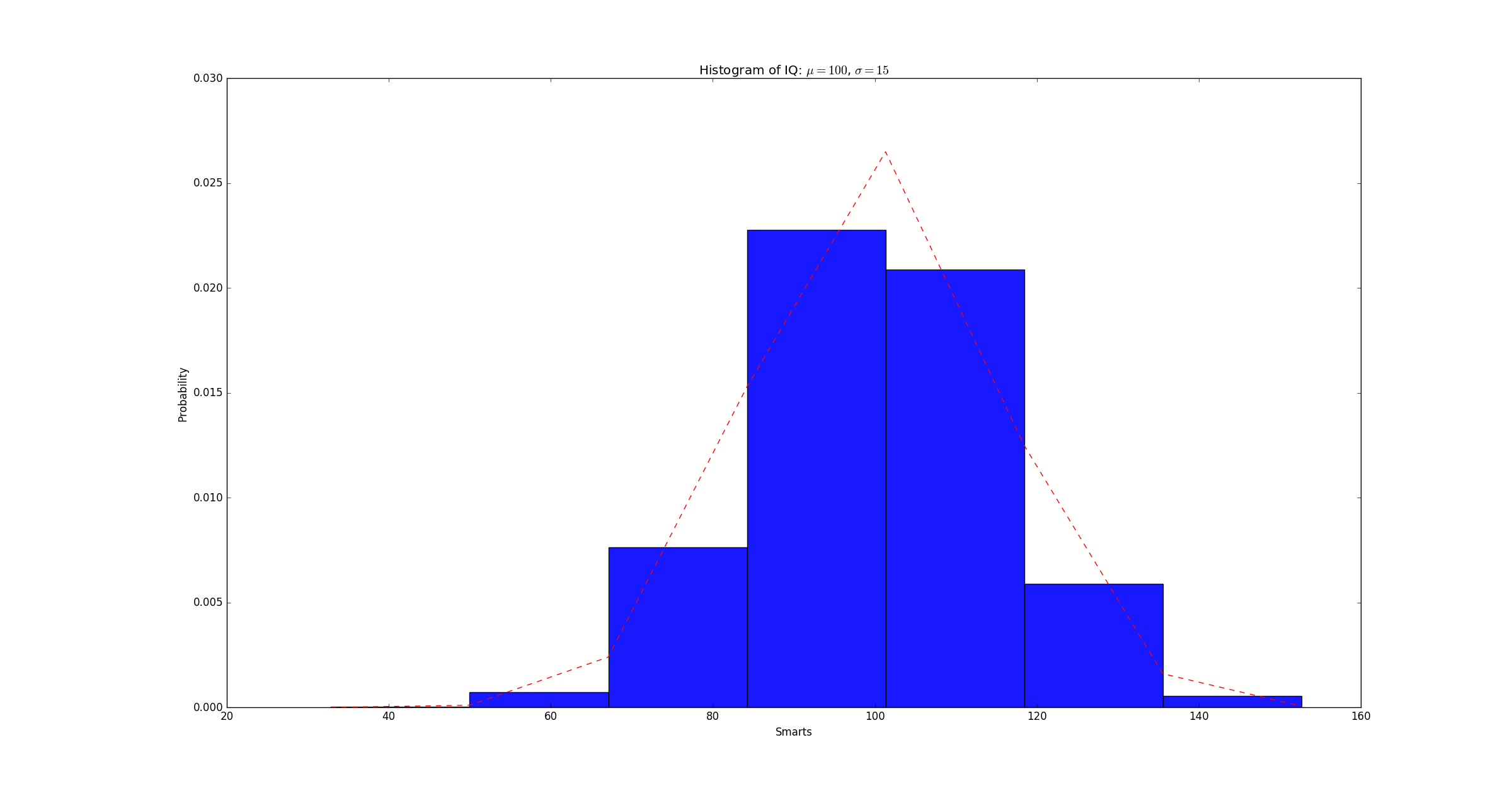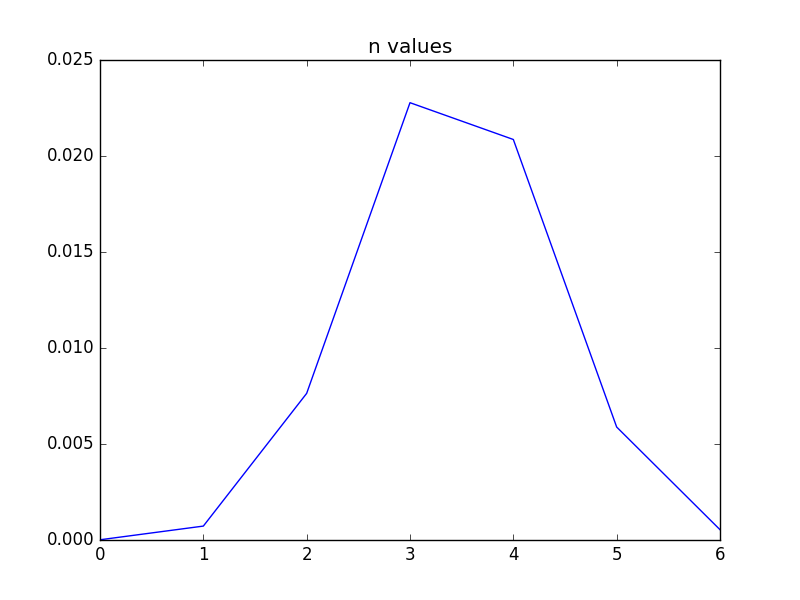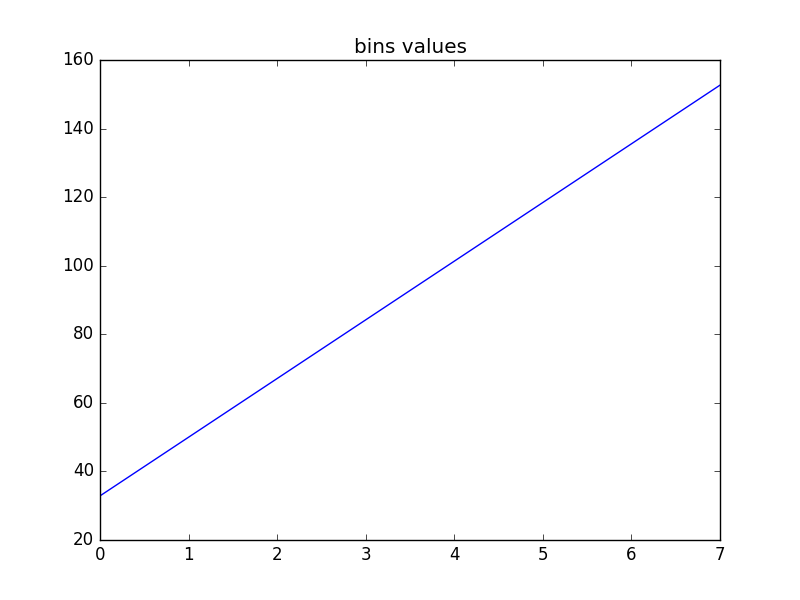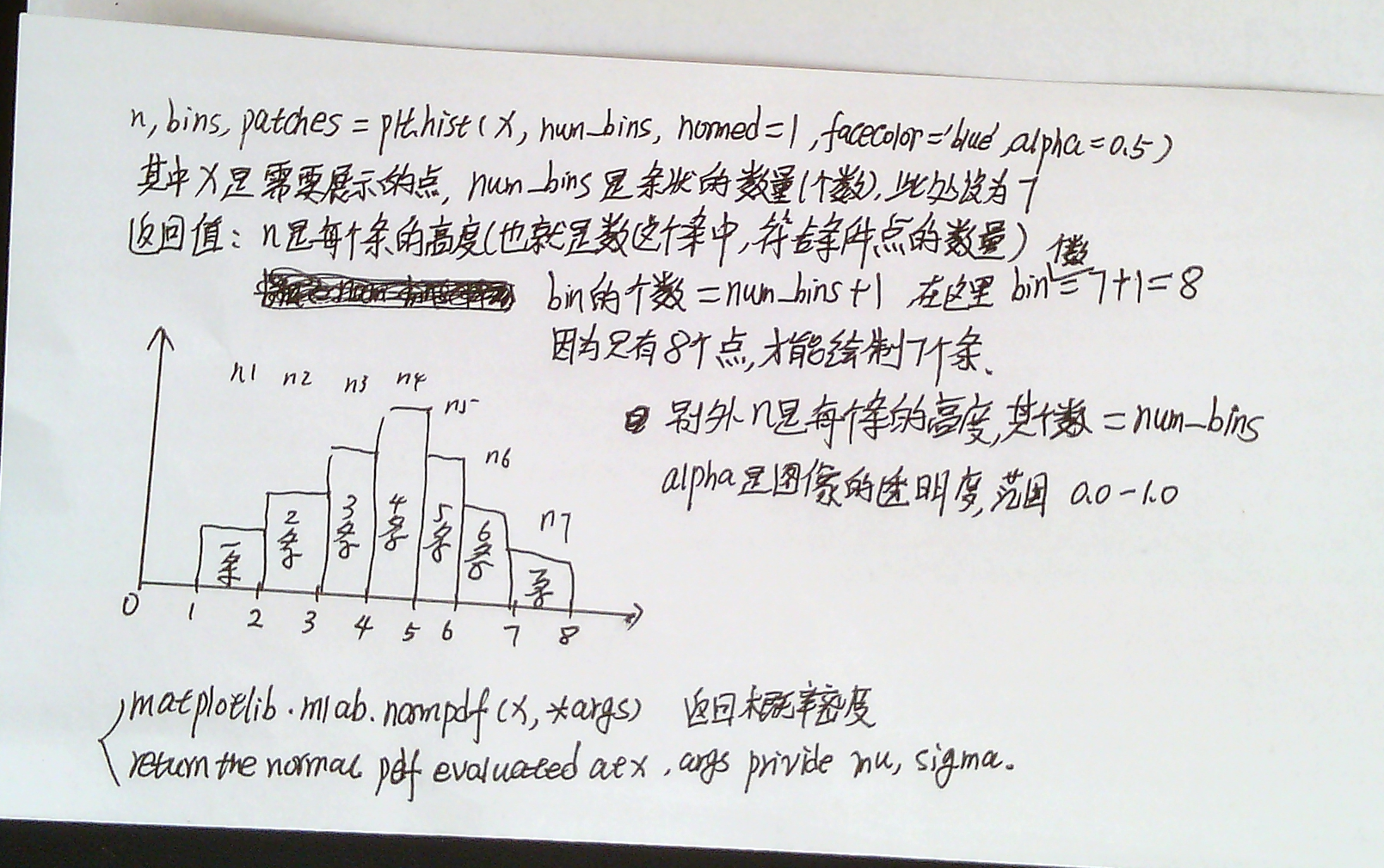""" Demo of the histogram (hist) function with a few features. In addition to the basic histogram, this demo shows a few optional features: * Setting the number of data bins * The ``normed`` flag, which normalizes bin heights so that the integral of the histogram is 1. The resulting histogram is a probability density. * Setting the face color of the bars * Setting the opacity (alpha value). x : (n,) array or sequence of (n,) arrays 这个参数是指定每个bin(箱子)分布的数据,对应x轴 bins : integer or array_like, optional 这个参数指定bin(箱子)的个数,也就是总共有几条条状图 normed : boolean, optional If True, the first element of the return tuple will be the counts normalized to form a probability density, i.e.,n/(len(x)`dbin) 这个参数指定密度,也就是每个条状图的占比例比,默认为1 color : color or array_like of colors or None, optional 这个指定条状图的颜色 我们绘制一个10000个数据的分布条状图,共50份,以统计10000分的分布情况 """ import numpy as np import matplotlib.mlab as mlab import matplotlib.pyplot as plt # example data mu = 100 # mean of distribution sigma = 15 # standard deviation of distribution x = mu + sigma * np.random.randn(10000) num_bins = 7 # the histogram of the data n, bins, patches = plt.hist(x, num_bins, normed=1, facecolor='blue', alpha=0.9) # add a 'best fit' line y = mlab.normpdf(bins, mu, sigma) plt.plot(bins, y, 'r--') plt.xlabel('Smarts') plt.ylabel('Probability') plt.title(r'Histogram of IQ: $mu=100$, $sigma=15$') # Tweak spacing to prevent clipping of ylabel plt.subplots_adjust(left=0.15) plt.show() plt.plot(n) plt.title('n values') plt.show() plt.plot(bins) plt.title('bins values') plt.show()



